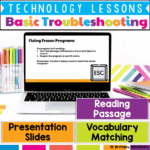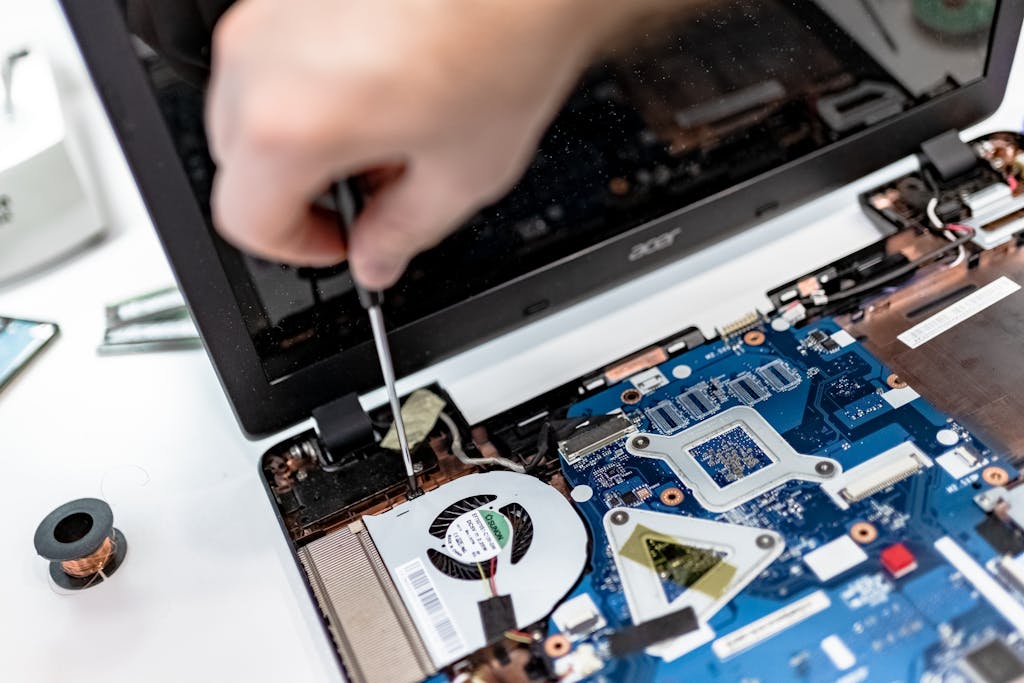Basic Troubleshooting Tips for Common Technology Issues in the Classroom
With the integration of technology in the classroom comes a myriad of potential issues that can impede the teaching and learning process. From hardware malfunctions to software glitches and connectivity problems, educators often find themselves facing technological challenges that can disrupt the flow of a lesson. In this article, we will explore basic troubleshooting tips for common technology issues in the classroom, equipping educators with the knowledge and strategies needed to effectively address and resolve these challenges.
The Necessity of Technology in the Classroom
Technology plays a crucial role in enhancing the learning experience in classrooms. From interactive whiteboards to educational apps, integrating technology can make lessons more engaging and interactive for students.
Technology integration in the classroom not only enriches the educational experience but also prepares students for the digital-driven world they will enter upon graduation. It helps in fostering creativity, collaboration, critical thinking, and problem-solving skills among students.
Common Challenges Faced by Educators
Despite the benefits, educators often face logistic challenges when it comes to integrating technology into their teaching. Issues such as hardware malfunctions, software glitches, and connectivity problems can disrupt the flow of a lesson, causing frustration for both teachers and students.
Troubleshooting those technology issues in the classroom will help these problems become mere hiccups!
Troubleshooting Hardware Problems
From a projector refusing to display to a printer that’s gone rogue, hardware problems can range from puzzling to downright frustrating. Understanding how to identify these issues and differentiate between hardware and software problems is the first step in troubleshooting effectively.
Just like students need proper care and attention, classroom technology also requires some TLC to function at its best. Simple maintenance tasks like keeping devices clean, updating software regularly, and organizing cables can go a long way in preventing hardware issues from cropping up.
Taming Software Glitches
From frozen screens to sudden crashes, software glitches can bring your lesson to a halt as surely as the nastiest computer virus. Identifying common issues like compatibility errors, outdated software, or conflicts between programs is key to resolving them swiftly and getting back on track.
When it comes to software problems, a methodical approach can work wonders. Step-by-step troubleshooting, such as restarting the device, checking for updates, or reinstalling the software, can often resolve the issue without breaking a sweat.
Addressing Connectivity Issues
Let’s dive straight into troubleshooting tips for addressing connectivity issues in the classroom.
Understanding how to troubleshoot network problems, such as checking for signal interference or resetting the router, can help restore a seamless online experience for both teachers and students.
A strong Wi-Fi connection is like having a trusty sidekick – reliable, supportive, and always there when you need it. By optimizing Wi-Fi settings, investing the right network equipment, and ensuring adequate coverage in the classroom, educators can minimize connectivity issues and keep the digital learning journey on track.
Managing User Errors
Ruling out user error should always be on your checklist of troubleshooting solutions. Let’s face it, we’ve all been guilty of the occasional tech blunder. From forgetting passwords to clicking on suspicious links, user errors are all too common. Understanding that mistakes happen is the first step towards effective troubleshooting.
To prevent user errors, education is key. Provide training sessions, create user-friendly guides, and encourage open communication about tech concerns among both teachers and students. Check out our guide for Teaching Elementary Students how to Troubleshoot Common Technology Issues to begin heading off tech issues at the base.
Enhancing Security Measures
From setting strong passwords to installing firewalls, implementing security protocols is crucial to keeping tech issues at bay. Stay updated on the latest security trends and ensure everyone follows best practices. After all, a chain is only as strong as its weakest link!
In a digital world full of cyber threats, protecting sensitive data is also non-negotiable. Stress the importance of data security to your students and staff. A little precaution today can save a lot of trouble tomorrow.
Implementing Regular Maintenance Procedures
Just like cars need regular tune-ups, tech devices require maintenance too. Schedule routine checks and system updates to ensure everything is running smoothly. While they may seem like a hassle, they often contain essential bug fixes and security patches. School breaks, professional development days, or scheduling updates to occur in the wee hours are all options to create a schedule that works for your school. Prevention is always better than a tech meltdown in the middle of a lesson!
Our Troubleshooting Education Resources

Basic Tech Troubleshooting Lesson

Troubleshooting and Managing Digital Files Mini Unit

Troubleshooting Tips and Strategies Posters

Technology Troubleshooting Discussion Prompts Printable Cards

Basic Troubleshooting Printable Task Cards
Final Thoughts
By implementing the troubleshooting tips for technology issues in the classroom that we have outlined in this article, educators can enhance the efficiency and effectiveness of technology integration in the classroom. Addressing hardware problems, software glitches, connectivity issues, user errors, security measures, and maintenance procedures will not only minimize disruptions but also create a more seamless learning environment for both teachers and students. With a proactive approach to technology troubleshooting, educators can ensure that technology remains a valuable tool for enhancing the educational experience in the classroom.
Revolutionize Your Classroom with These Tech Tips!
As educators strive to engage students and enhance their learning experiences, the integration of innovative…
Transform Learning for Your Students with These Simple Tech Tips!
As educators face the challenge of meeting diverse student needs, simple tech tips can transform…
Google Drive 101: How to Organize, Share, and Find Your Files Quickly
Effective file management is crucial for both personal and professional success, and Google Drive stands…
Effective Email Management for Teachers: Organizing, Filtering, and Staying On Top of Messages
Effective email management is crucial for teachers to stay organized, communicate effectively, and keep track…
How to Convert PowerPoint Presentations to Google Slides (and Why You Should)
Teachers often create resources in PowerPoint, but as more schools adopt Google Workspace, it’s becoming…
Basic Troubleshooting Tips for Common Technology Issues in the Classroom
With the integration of technology in the classroom comes a myriad of potential issues that…












